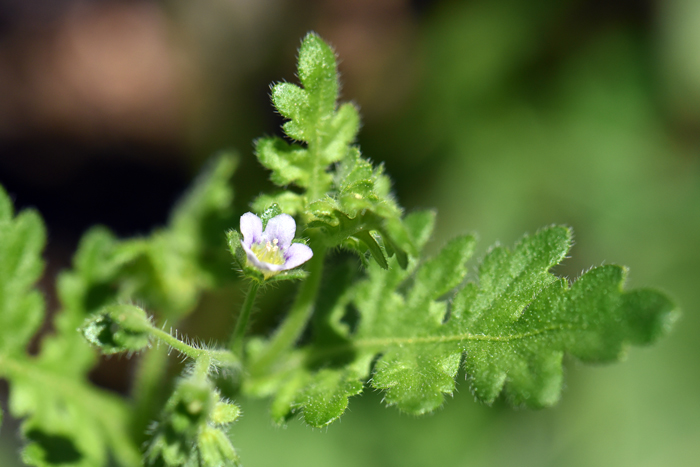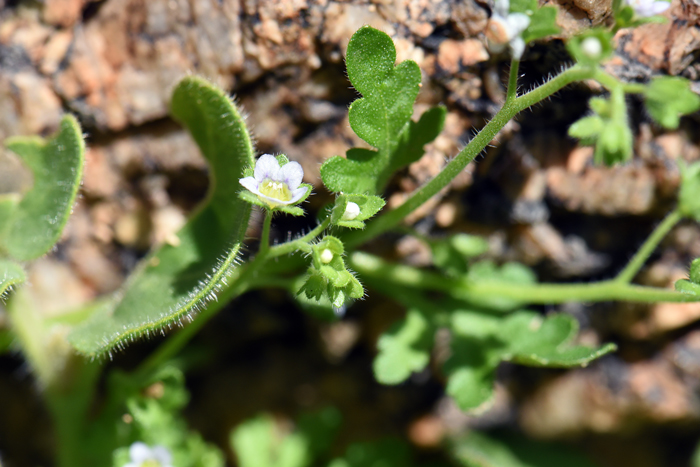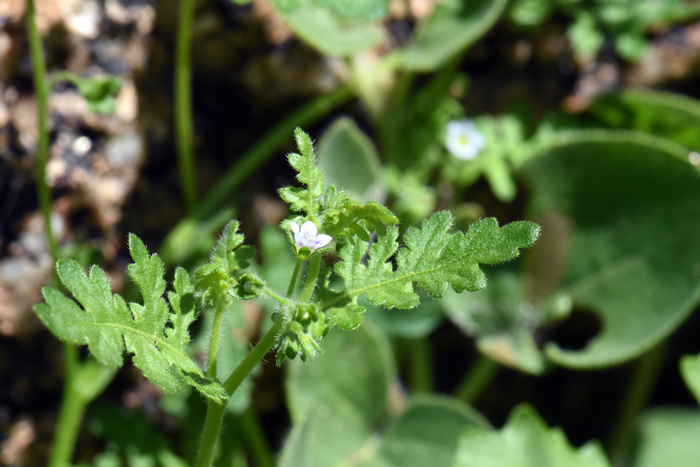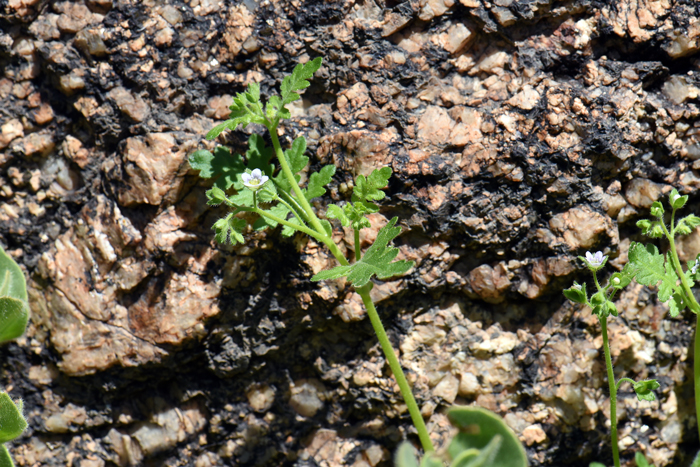Eucrypta micrantha, Dainty Desert Hideseed




Scientific Name: Eucrypta micrantha
Common Name: Dainty Desert Hideseed
Also Called: Desert Eucrypta, Desert Hideseed
Family: Hydrophyllaceae (Boraginaceae, Hydrophylloideae), the Waterleaf Family
Synonyms: (Ellisia micrantha, Macrocalyx micranthus, Nyctelea torreyi, Phacelia micrantha)
Status: Native
Duration: Annual
Size: Up to 12 inches or less.
Growth Form: Forb/herb; plants have slender delicate stems with stalked glands; plants scented.
Leaves: Green; deeply pinnately 7-9-lobed, lower leaves 1-pinnate, entire or few toothed; upper leaves sessile or nearly so.
Flower Color: Blue-purple, white, tube yellow; inflorescence 4 to 12 flowers per branch, stipitate-glandular; calyx lobes erect.
Flowering Season: February to May; March to June in California.
Elevation: 150 to 4,000 feet; up to 7,500 California and elsewhere.
Habitat Preferences: Canyons, hillsides, rocky crevices, washes, slopes.
Recorded Range: Eucrypta micrantha is found in the southwestern United States in AZ, CA, NM, NV, TX, UT. It is also native to Baja California and northern Mexico.
North America & US County Distribution Map for Eucrypta micrantha.
U.S. Weed Information: No information available.
Invasive/Noxious Weed Information: No information available.
Wetland Indicator: No information available.
Threatened/Endangered Information: No information available.
In the Southwestern United States: Arizona, California and Nevada each have 2 species of Eucrypta, New Mexico, Texas and Utah each have 1 species. All data is approximate and subject to taxonomic changes.
Comments: Eucrypta micrantha, Dainty Desert Hideseed is a slender early spring bloomer that grows among adjacent plants and nearby structure for support. Dainty Desert Hideseed prefers partial shade (adjacent plants and structure) and disappears with increased temperature and when soils drying out.
In Southwest Desert Flora; also see Dainty Desert Hideseed which is superficially similar to Distant Phacelia, Phacelia distans, and Blue Fiestaflower, Pholistoma auritum.

